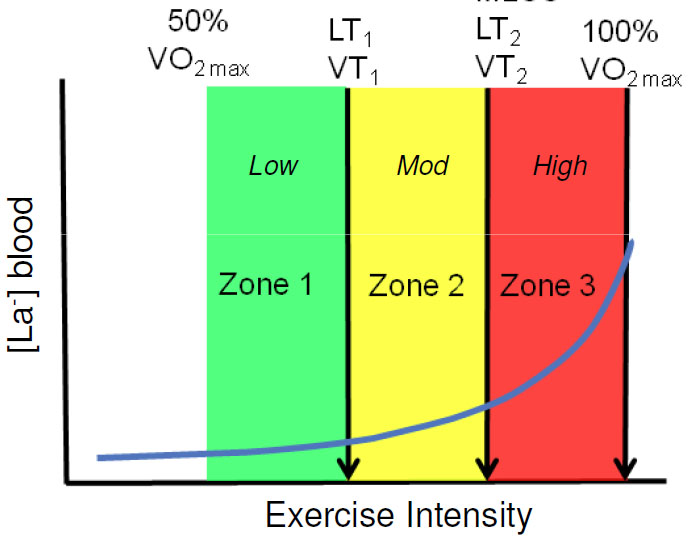How Hard Should I Train?
One question I’ll routinely get from runners seeking my services, “is how much time should I spend running hard versus easy?”. Let me start by saying that every runner is different and it’s never a one size fits all approach. I find it most helpful to examine what strategy has been successful for a runner in the past and tweak things from there based on the specific goals. In the case of a novice runner we can look toward the research and what the best athletes in the world are doing for a foundation.
There are a handful of descriptive studies showing that world class endurance athletes spend the bulk of their time performing low intensity training. A study by Billat et al collected data on training intensity distribution of 20 world class marathoners 12 weeks before the olympic trials. Results showed that 78% of their training was performed below marathon pace, 4% was at marathon pace, and 18% was above marathon pace. Another study by Billat et al with Kenyan 5K/10K athletes showed similar results with 85% of training being low intensity. Esteve-Lanao et al examined 1000 heart rate records of elite Spanish distance runners over 6 months and showed 71% of training was low intensity, 21% was medium, and 8% was high intensity training. Similar findings are present in other endurance sports such as rowing (Steinacker et al), XC skiing (Espen Tønnessen et al), and cycling (Zapico et al).
The common theme with these studies is that the bulk of training is preformed at a low intensity. Pretty interesting right? I commonly see runners who spend the bulk of their training at a moderate intensity. Sometimes this works out for them and sometimes they end up over-trained and under-recovered. So if you have been plagued by injury or have not been performing at your best, you may want to examine your training intensity distribution and think about shifting more of your training to a lower intensity zone.
If you have questions about your training I would be happy to discuss them with you. Please reach out and we can set up a time to chat!
-Steve White, PT, DPT, OCS, CSCS
Billat VL, Demarle A, Slawinski J, et al. Physical and training characteristics of top- class marathon runners. Med Sci Sports Exerc. 2001;33:2089–2097.
Billat V, Lepretre PM, Heugas AM, et al. Training and bioenergetic characteristics in elite male and female Kenyan runners. Med Sci Sports Exerc. 2003;35:297–304; discussion 305–296.
Espen Tønnessen, Øystein Sylta,Thomas A. Haugen, Erlend Hem, Ida S. Svendsen, Stephen Seiler The Road to Gold: Training and Peaking Characteristics in the Year Prior to a Gold Medal Endurance Performance. PLOS One July 14, 2014 DOI: 10.1371/journal.pone.0101796
Steinacker JM, Lormes W, Lehmann M, et al. Training of rowers before world cham- pionships. Med Sci Sports Exerc. 1998;30:1158–1163.
Zapico AG,Calderon FJ,Benito PJ, etal. Evolution of physiological and haematological parameters with training load in elite male road cyclists: a longitudinal study. J Sports Med Phys Fitness. 2007;47:191–196.

